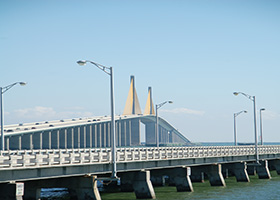

That’s one conclusion, perhaps disputable, from a panel on infrastructure investing sponsored by AIMA Canada, the Toronto CFA Society and the Canadian chapter of the Chartered Alternative Investment Analyst Association.
There are many things to dispute in infrastructure. For one thing, John Walker, Managing Director of IMG Aurion Infrastructure Fund, who was a founding director of the Borealis Infrastructure Fund owned by OMERS, says infrastructure is not one of the youngest asset classes, but one of the oldest – one that goes to the soul of Canada, with its transcontinental railways and power plants Given that history, “it should be our strongest asset class.”
Still, measuring its returns is problematic. Rheal Ranger, CFO at Borealis Infrastructure, which has been investing in infrastructure since 1995 and currently has a $7 billion allocation, notes there are no publicly quoted benchmarks. OMERS instead uses an absolute return or cash-yield basis – and expects an 9% to 12% net return, without being predicated on possible capital gains. But does this mean the benchmark should be fixed income?
The CPP Investment Board is also an active player, with 5% of its $125 billion portfolio in infrastructure. But senior principal Bruce Hogg acknowledges there’s not enough of a history of returns to benchmark the asset class. “It’s a mug’s game.”
OMERS is increasingly seeking direct investments with partners, as is CPPIB, which started out as a co-investor. Where does that leave smaller funds? David Kaposi, a principal at Mercer Consulting, says 98% of Canadian funds can’t afford direct or co-sponsored investments.
And, says David Rogers, principal at Caledon Capital Management, funds of funds don’t really work in the infrastructure space – unlike in private equity.
As a result, Kaposi argues, smaller funds have to seek out unlisted funds, often sponsored by a bank. Here the big pension players have an advantage: they are looking to hold for the long-term: 20 or more years.
By contrast, a small fund may feel that that horizon is too long. So they may not want to lock in for a 15-to-20 year-period that an unlisted closed end fund would offer. They may need the liquidity beforehand. On the other hand, while an open-ended unlisted fund can provide liquidity, the liquidity depends on an internal valuation of the assets – not a market valuation.
Does infrastructure provide diversification? The answer seems to be yes. Does it provide enhanced returns? The answer seems to be yes. Should pension funds rush in? No?
“If you go back 10 years ago,” explains Kaposi, “infrastructure is looking good on a relative basis.” But at the height of the tech boom, who was interested?
For pension funds, in any case, he adds, “it’s probably a good thing they weren’t able to invest 20%” in infrastructure. Since opportunities are relatively rare, compared to private equity, even with a 10% allocation, “it’s going to take you years to get that invested.”
Infrastructure: not quite a new asset class, but rather a newly investable asset class.

